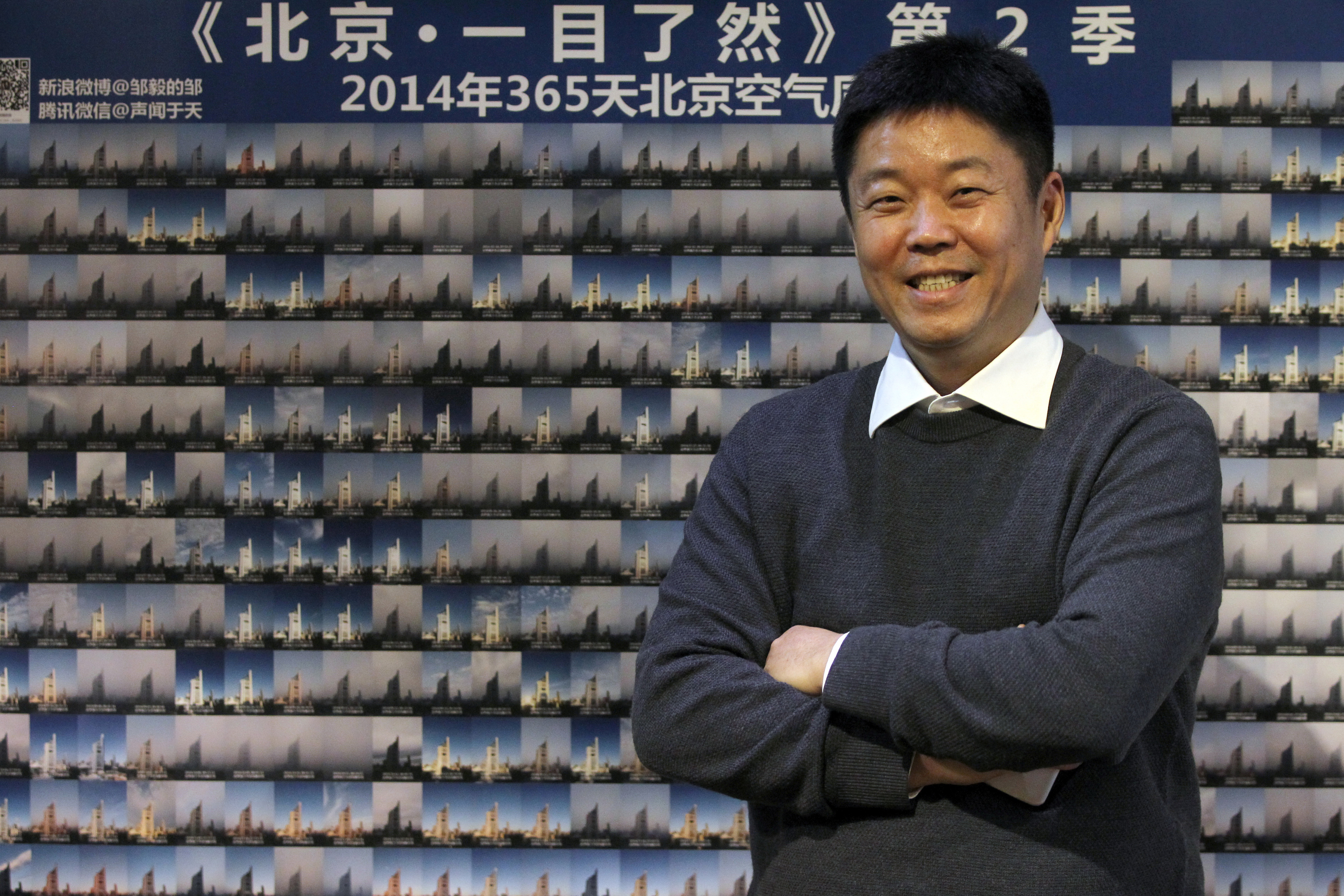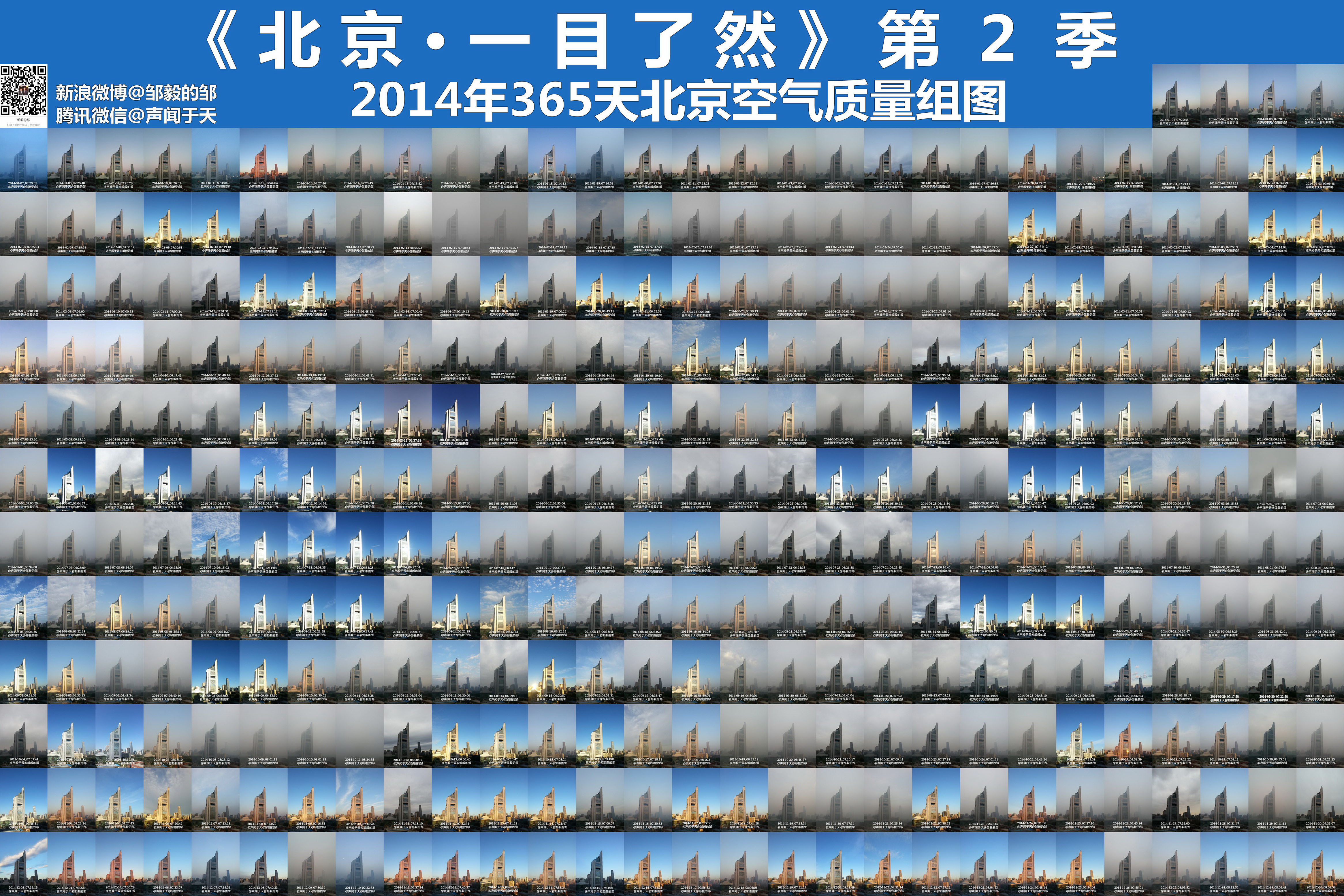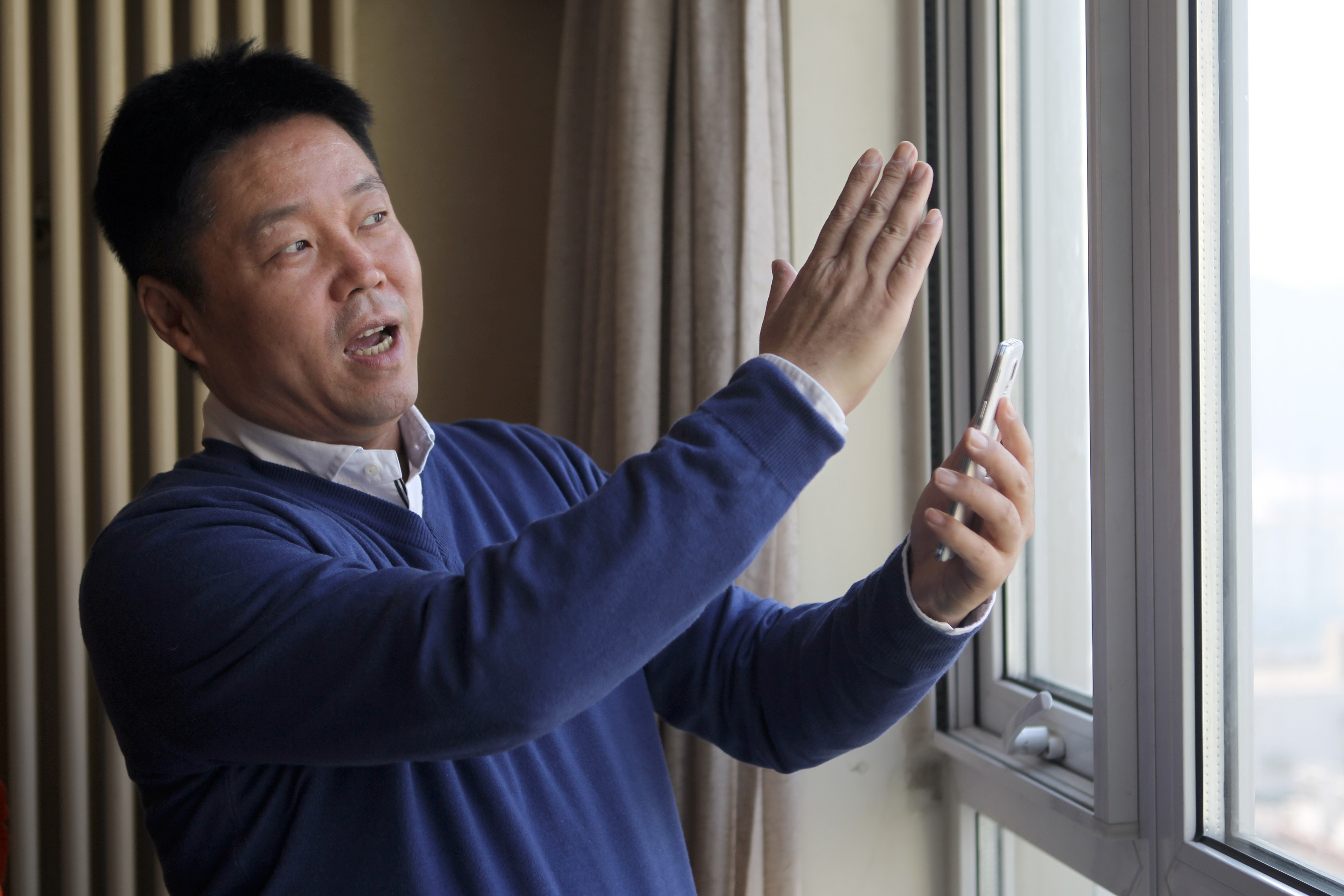
A photographer focuses on Beijing’s pollution to create a clear picture of the capital’s murky air quality. Lin Qi reports.

The grid of all BTV building photos by Beijinger Zou Yi in 2014 creates a clear picture of Beijing’s fluctuating pollution levels.[Photo/China Daily]
Beijinger Zou Yi’s morning routine includes snapping a daily photo of the Beijing Television station 150 meters outside his apartment window and tweeting the image to his Sina Weibo microblog.
He also posts a 3x3 grid juxtaposing the photo with those of the past eight days of the same building from the same angle. These reveal the fluctuating pollution levels, as some photos show skies that are cobalt blue and others that are leaden.
Zou has also tweeted shots of the China World Trade Center Tower III-the capital’s tallest building-where he works. Viewers can get a better sense of air visibility since the tower is 800 meters away, he explains.
Zou usually tweets for his 1,200 followers between 6:30 am and 8:30 am, depending on when the sun rises as the seasons change.
He uses the tag “#yi mu liao ran#”, which literally means, “apparent at a glance”. Zou also posts on the instant-messaging platform WeChat.
“Only environmental issues capture everyone’s attention these days,” he says.
“Rich or poor, we all breathe the same air. We all win or lose together.”
Zou began the project after smog choked Beijing’s skies for nearly two weeks in January 2013, a period internationally known as the “airpocalypse”.
His followers reacted strongly when he tweeted a grid of the first 64 photos.
“Friends said you truly get a clear idea of air pollution at a glance. They encouraged me to continue.”
His family and friends snap the photos for him if he’s out of Beijing.
He’d planned to stop after his 365th picture. But he changed his mind after he posted it.
Followers’ enthusiasm propelled his determination.
“People are used to getting my photos daily and push me if I tweet late,” Zou says.
“We’ve had a lot of discussions. I feel yi mu liao ran isn’t a personal project anymore but has become a duty.”

The grid of all BTV building photos by Beijinger Zou Yi in 2014 creates a clear picture of Beijing’s fluctuating pollution levels.[Photo/China Daily]

[Photo/China Daily]
He has enhanced the tweets by including commentary with the tower photos under the pseudonym “#No 1 Bus# Driver”.
His Jan 14 tweet, for instance, reads: “#No 1 Bus# Driver says: ‘Haze is suffocating Beijing for the third day and is getting even worse ... It’s reported Beijing will invest $130 billion more to curb air pollution over three years. I just hope the government won’t waste taxpayers’ money’.”
On Jan 4, Zou printed two huge grids of all his BTV building photos from 2013 and 2014.
The municipal watchdog released a government report on the capital’s 2014 air conditions the same day.
“It’s a fortunate coincidence,” Zou says.
“All stakeholders in environmental issues should be fully involved in decision-making. Grassroots supervision motivates and pressures governments to solve problems with greater transparency.”
Zou’s friend Yan Huang, who works for two environmental nonprofits in Beijing and Guangdong’s provincial capital Guangzhou, says: “Zou Yi is a man of action, who discloses the reality of Beijing’s air pollution with his photos. I agree with his approach (to engage social issues). Rather than debating, he takes action. He lets facts speak for themselves in a mild and practical way. His photos reveal truths about false official figures. He’s an unsung hero in the campaign to publicize air-quality data.”
Zou also acts on a personal level by adopting an environmentally friendly lifestyle. He owns two cars but usually rides the subway. He walks if his destination is within three subway stops.
The avid climber also initiated a campaign to collect litter along the Great Wall’s Jiankou section.
“I don’t ask people to do what I do,” he says.
“I just hope that people can make wise choices about transportation and waste disposal to reduce carbon emissions as much as possible.”
Yan explains environmental problems are not only caused by, but also can be saved by, the way we live.
“Everyone produces waste,” she says.
“People need to fix small environmental problems before they aggregate into huge problems that create intense pressure on society and governments. Everyone is a light. Together, we can brighten our world’s future.”
